When it comes to city passes and travel cards, it’s usually fairly easy to figure out whether they would be worth it for you or not. For things like the Paris Pass or London Pass, they have a list of the most popular attractions and how much they cost, right there for you to see. The Swiss Travel Pass, however, is shrouded in mystery, or at least it was until I spent several days tracking down all of the prices and benefits.
A great many of the visitors and commenters on my popular page about where to go in Switzerland on a short visit are wondering whether the Swiss Travel Pass is a good deal. Embarrassingly, I’ve always had to answer that I found the pass too confusing to confidently advise people on. Now that has all changed, after literally days of research.
Note: This article was last updated in February, 2024.
Disclosure: This is a reader-supported website and some of the links are affiliate links where a small commission is paid to help keep this site going, but the cost to visitors is the same. The Swiss Travel Pass seems quite expensive at first, so it felt like it might be hard to get your money’s worth out of it. As it turns out, it’s pretty easy to get good value, and it’ll be a good deal for many visitors.
New in 2024
Prices increased an average of 5.9% from 2023 on the Swiss Travel Passes, but the Half Fare Card remains at CHF120, which is where it’s been for many years. Train fares in the country increased by similar percentages so the value is basically unchanged. There were no other notable changes to service or the included attractions and train routes.
>>>Buy the Swiss Travel Pass online
Where to stay in Interlaken and the Lauterbrunnen Valley
Since most people reading this will be visiting the Interlaken area and I get so many questions about it, I decided to write a detailed guide on which area to stay in while visiting this area.
>>>Where to stay in Interlaken or the Lauterbrunnen Valley in Switzerland
I included many huge photos in that post so readers will be able to get a better idea of what each place looks like and they are worth a look by itself.
>>>Lucerne or Interlaken: Which to visit and how long to stay?
The article just above will help you decide on how long to spend in each of Switzerland’s two best tourist areas.
Are you 100% sure where you want to go in Switzerland? This should help
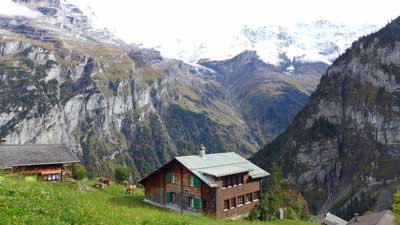
Zurich and Geneva are pleasant but dull. The good news is that Switzerland is packed with amazing sights and none of them are the big cities. If you aren’t 100% locked in yet, please read the article below and I think you’ll enjoy it.
Is the Swiss Travel Pass a good deal? Here's the short version

The bottom line is that the scenery, train journeys, and cable car rides in Switzerland are stunning and not found anywhere else in the world. They are also quite expensive if you pay for them one at a time. So no matter how you visit Switzerland, you are going to be paying quite a bit, or skipping the absolute best things that you’ve come there to see.
With good planning it’s quite easy to get great value out of a Swiss Travel Pass, but it might be a poor choice for those who don’t like to plan ahead. You can easily do a scenic train ride and a cable car in the same day, and still have time to do a scenic hike in the process.
First class or second class? Good news for most people
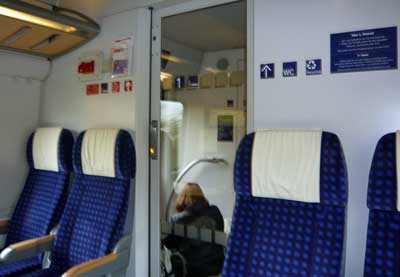
That said, Swiss Trains are literally the nicest in Europe and even the Second Class seats and carriages are nicer and roomier than trains in neighboring countries. The First Class seats are larger and nicer with only 3 across the cabin instead of 4, but honestly Second Class is perfectly comfortable for almost everyone.
Again, First Class on European trains like this is generally popular with business travelers where the company is paying and they need to get work done during the ride, and also senior citizens who don’t want to worry about a carriage full of backpackers. For most of the rest of us, Second Class is more than comfortable enough and the seat width and legroom compare to business-class airline seats. I’m a big and tall guy and I almost always travel in Second because it’s plenty comfortable enough and all the seats arrive at the same time anyway.
The longer you'll be in Switzerland, the better deal a Swiss Travel Pass will be
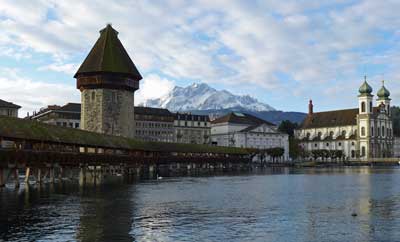
In other words, if you are staying 5 days or fewer, you have to do the math to determine your best option. But if you are spending even 6 or 7 days in Switzerland then the 6-day or 8-day Pass is almost guaranteed to be a great deal and your best choice. Once you have a Swiss Travel Pass you’ll absolutely love the ability to just hop on any train (excellent trains, always on time) and most boats and cable cars without having to worry about the cost. The per-day cost of an 8-day Pass even if you only use 6 of those days is about CHF65, and Switzerland is filled with amazing train rides and boats and cable cars that can get you that much value before noon each day.
Schilthorn (50% discount) and Jungfraujoch (25% discount) are cheaper with a Swiss Travel Pass
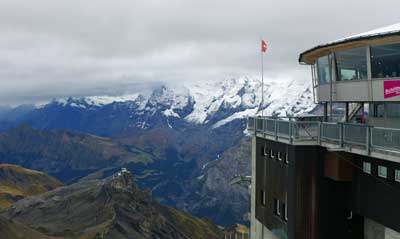
Both of those peak experiences are extraordinary and different from each other. Even so, compared to Jungfraujoch, Schilthorn is also faster and more comfortable on the way up and down. You can enjoy an excellent visit to Schilthorn in 4 hours or so (or a bit longer if you eat at the spinning Piz Gloria restaurant at the top), while a visit to Jungfraujoch requires closer to 6 hours.
NOTE: Schilthorn closes for maintenance for a week or two in late November most years.
Consider the Swiss Half-Fare Card instead
If you AREN’T going to be doing two or more of the long (and expensive) scenic train trips, you will get much better value out of the Swiss Half-Fare Card, which is explained a bit below.
Mt Rigi, near Lucerne, is 100% covered by the Swiss Travel Pass
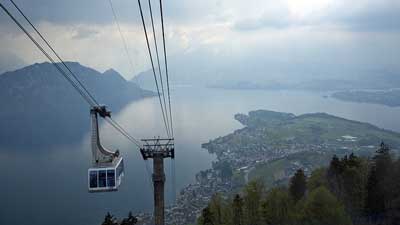
Is a Swiss Travel Pass right for you?
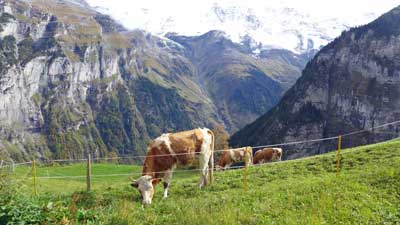
Most people only visit Switzerland for 5 or 6 days at most, so the 3-day and 4-day passes are the ones to focus on. But if you are staying for 8 days or more, those longer passes are almost certainly a great deal for you.
Long story short, if you plan on doing 2 of the more expensive scenic trains and the Jungfraujoch railway or the Schilthorn cable car, then the pass will save you money. Switzerland is expensive, but it’s worth it, and the travel pass can help make it a bit more affordable.
What the Swiss Travel Pass includes
- Free rail travel on normal trains and most scenic trains
- Discounted travel (about 50%) on popular tourist mountain trains
- Discounted travel (about 50%) on popular tourist cable cars
- Free travel on public transport in 75 towns and cities
- Free entry to around 500 museums in Switzerland
The Swiss Travel Pass covers the fare on the most popular scenic and panoramic trains. You can choose a normal seat in a regular carriage for no additional cost, but there is a supplement of CHF8 to CHF49 for a reserved seat in one of the special panorama carriages on these routes.
Prices of the 2024 Swiss Travel Pass
1st Class
- Adult 3-day Pass: CHF389
- Youth (4 to 25) 3-day Pass: 274
- Adult 4-day Pass: 469
- Youth (4 to 25) 4-day Pass: 330
- Adult 6-day Pass: 602
- Youth (4 to 25) 6-day Pass: 424
- Adult 8-day Pass: 655
- Youth (4 to 25) 8-day Pass: 469
- Adult 15-day Pass: 723
- Youth (4 to 25) 15-day Pass: 512
2nd Class
- Adult 3-day Pass: CHF244
- Youth (4 to 25) 3-day Pass: 172
- Adult 4-day Pass: 295
- Youth (16 to 25) 4-day Pass: 209
- Adult 6-day Pass: 379
- Youth (16 to 25) 6-day Pass: 268
- Adult 8-day Pass: 419
- Youth (16 to 25) 8-day Pass: 297
- Adult 15-day Pass: 459
- Youth (16 to 25) 15-day Pass: 328
Swiss Travel Pass Flex
This version costs a bit more, but you don’t have to use the travel days consecutively. It’s a great option for anyone who won’t be taking longer train rides each day.
- Adult 3 Flex days in 1 month (1st Class): CHF445
- Adult 3 Flex days in 1 month (2nd Class): 279
- Adult 4 Flex days in 1 month (1st Class): 539
- Adult 4 Flex days in 1 month (2nd Class): 339
- Adult 6 Flex days in 1 month (1st Class): 644
- Adult 6 Flex days in 1 month (2nd Class): 405
- Adult 8 Flex days in 1 month (1st Class): 697
- Adult 8 Flex days in 1 month (2nd Class): 439
- Adult 15 Flex days in 1 month (1st Class): 755
- Adult 15 Flex days in 1 month (2nd Class): 472
Where to buy the Swiss Travel Pass
The Swiss Half-Fare Card – A better option for many visitors
Far less confusing than the Swiss Travel Pass, you can instead get a Swiss Half-Fare Card, and it will be a better deal for many travelers. The price is lower and it’s much easier to do the math, and the discounts are greater on some things as well.
- Swiss Half-Fare Card for 30 days: Adults – CHF120 or US$129
What you get:
Those who buy the Swiss Half-Fare Card will get 50% discount on all trains, buses, and boats in Switzerland for up to 30 days, as well as 50% off all public transportation in 75 cities and towns.
>>>Buy the Swiss Half-Fare Card
Why the Half-Fare Card is a better deal for many
While the Swiss Travel Pass is a great deal for those doing many of the expensive scenic journeys and mountain sights within a few days, it’s not good value for those who are doing fewer of the expensive trips and/or those who are staying longer. Also, the Swiss Travel Pass only provides a 25% discount on the amazing Jungfraujoch Railway, which costs between CHF120 and CHF224 return depending on your starting point, while the Half-Fare Card provides a 50% discount.
The math is simple as well. You can just add up the cost of the trains, boats, and buses you’ll be taking while in Switzerland, and if the total is more than CHF240 or so, the Half-Fare Card will save you money.
Example itinerary:
- Zurich to Interlaken train (2nd Class): CHF50
- Schilthorn Cable Car: CHF112
- Jungfraujoch railway from Interlaken: CHF205
- Interlaken to Lucerne train (2nd Class): CHF33
- Mt Rigi roundtrip from Lucerne: CHF84
- Engelberg (near Lucerne) to Mt. Titlis Cable Car: CHF92
- Lucerne to Zurich train (2nd Class): CHF25
Total per person: CHF601
Total with Half-Fare Card (including price of card): CHF420.50
It would be tough to do all of those things in 4 days, although it is possible. If you bought a 4-day Swiss Travel Pass here is how it adds up:
4-Day Swiss Travel Pass: CHF259
Supplements for Schilthorn, Jungfraujoch, and Mt. Titlis: CHF203.25
Total cost: CHF462.25
Bottom line on the Swiss Half-Fare Card
Since the Half-Fare Card lasts 30 days and provides a larger discount on Jungfraujoch, it is better value for visitors who want to include that scenic top-of-Europe rail journey on their trip. The discounts also add up more quickly on Schilthorn and Mt. Titlis trips, just to name two examples, and you don’t have to take many longer rail journeys to get value out of the Half-Fare Card.
Swiss Saver Day Pass (A one-day unlimited travel pass)
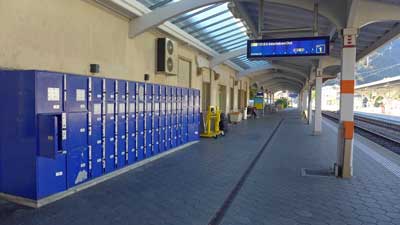
If you buy the Saver Day Pass at least 21 days in advance (and up to 60 days in advance) the 2023 cost is:
- 2nd Class (with Half Fare Card): CHF29
- 1st Class (with Half Fare Card): CHF82
- 2nd Class (with no Half Fare Card): CHF52
- 1st Class (with no Half Fare Card): CHF97
Once you research the normal cost of Swiss train fares you’ll see that the above prices are a very good deal for anyone riding more than 150 kilometers or so in a day. If you are just going, for example, from Zurich to Lucerne or Interlaken on a day, it’ll be cheaper to just buy that ticket individually. But if you are going from Geneva or Montreux to Interlaken or Lucerne then the Saver Day Pass will be much cheaper. Better still, you can use a Saver Day Pass to go from Interlaken to Geneva and back on the same day on the Goldenpass line and returning on the faster train through Bern, and it will still all be included for free.
If you don’t buy a Saver Day Pass at least 14 days in advance it’s more expensive, and if you only buy 1 to 3 days in advance it’s VERY expensive, so the key is to buy early. This is all confusing, but the Saver Day Pass should be a great option for many people only in Switzerland for one to three days.
Popular Swiss panorama scenic trains
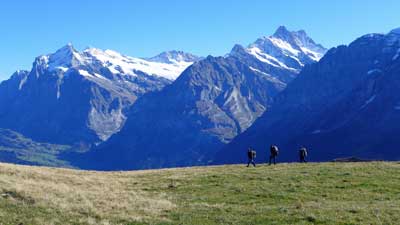
- Glacier Express
- Route: Zermatt to St. Moritz
- Train type: Panorama
- Journey time: 8 hours 3 minutes
- Distance: 291km
- 1st Class fare: CHF272
- 2nd Class fare: CHF159
- Compulsory seat reservation fee: CHF44 or 49
- Supplement for Swiss Pass holders: 13 to 33 for panorama carriage
- Bernina Express
- Route: Chur to Tirano and Lugano
- Train type: Panorama and bus
- Journey time: 4 hours 13 minutes and 3 hours 10 minutes
- Distance: 148km and 90km
- 1st Class fare: CHF113
- 2nd Class fare: CHF66
- Compulsory seat reservation fee: CHF32
- Supplement for Swiss Pass holders: 10 to 14 for panorama carriage
- GoldenPass Line
- Route: Lucerne to Montreaux
- Train type: Panorama
- Journey time: 5 hours 8 minutes
- Distance: 191 km
- Prestige Class fare: CHF131
- 1st Class fare: CHF96
- 2nd Class fare: CHF56
- Supplement for Swiss Pass holders: 8 to 15 for panorama carriage
- Gotthard Panorama Express (formerly Wilhelm Tell Express)
- Route: Lugano or Locarno to Lucerne
- Train type: Panorama and boat
- Journey time: 5 hours 21 minutes
- Distance: 182 km
- 1st Class fare: CHF164
- 2nd Class fare: CHF135
- Supplement for Swiss Pass holders: 39 to 49 for panorama carriage
- Swiss Chocolate Train
- Route: Montreux to Broc round trip
- Train type: Panorama or First Class
- Journey time: X hours X minutes
- Distance: 82 km
- 1st Class fare: CHF99
- 2nd Class fare: 89
- Supplement for Swiss Pass holders: 39
Popular Swiss scenic and theme trains
The scenic trains below are also extremely popular as sightseeing journeys rather than just as transportation, but can be used as both.
- Jungfraujoch round trip
- Route: Interlaken to Jungfraujoch
- Train type: special mountain train
- Journey time: 4 hours 41 minutes, round trip, plus time on top
- Distance: 73 km
- 1st Class fare: N/A
- 2nd Class fare: CHF224
- Supplement for Swiss Pass holders: 147 (so, a saving of CHF77)
- Gornergrat Railway
- Route: Gornergrat Railway
- Train type: Cog railway
- Journey time: 44 minutes return
- Distance: 10 km
- 1st Class fare: N/A
- 2nd Class fare: CHF90
- Supplement for Swiss Pass holders: 45
- Rigi round trip
- Route: Lucerne to Rigi
- Train type: Cog railway
- Journey time: 3 hours 25 minutes, plus time at the top
- Distance: 58 km
- 2nd Class fare: CHF78
- Supplement for Swiss Pass holders: None (this one is free with the pass)
- Mt Rigi Excursion (one-way and walk down)
- Route: Lucerne to Mt Rigi
- Train type: cogwheel train and/or cable car
- Journey time: 45 minutes up
- 1st Class fare: N/A
- 2nd Class fare: 49
- Supplement for Swiss Pass holders: 0
- Lotschberg Mountain Route and Centrovalli
- Route: Bern to Locarno
- Train type: Narrow gauge
- Journey time: 4 hours 40 minutes
- Distance: 212 km
- 1st Class fare: CHF158
- 2nd Class fare: CHF90
- Supplement for Swiss Pass holders: 5
- Jura round trip (Watchmaking Tour)
- Route: Neuchatel through Jura
- Train type: Regular
- Journey time: 3 hours 0 minutes
- Distance: 143 km
- 1st Class fare: CHF168
- 2nd Class fare: CHF108
- Supplement for Swiss Pass holders: 0
- Pre-Alpine Express
- Route: St. Gallen to Lucerne
- Train type: Regular
- Journey time: 2 hours 15 minutes
- Distance: 146 km
- 1st Class fare: CHF83
- 2nd Class fare: CHF47
- Supplement for Swiss Pass holders: 0
- Jura Foot Line
- Route: Basel to Geneva
- Train type: Regular
- Journey time: 2 hours 40 minutes
- Distance: 248 km
- 1st Class fare: CHF132
- 2nd Class fare: CHF75
- Supplement for Swiss Pass holders: 0
Popular Switzerland cable car rides
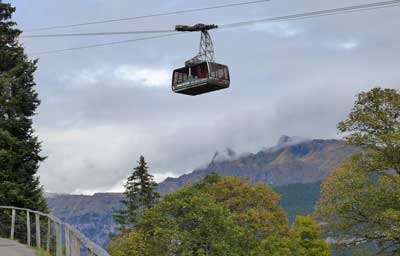
- Schilthorn
- Route: Stechelberg (Lauterbrunnen) to Schilthorn
- Train type: cable car
- Journey time: 1 hour
- 2nd Class fare: CHF108
- Supplement for Swiss Pass holders: 54
- Engelberg to Mt. Titlis cable car
- Route: Engelberg to Mt. Titlis
- Train type: cable car
- 2nd Class fare: CHF96
- Supplement for Swiss Pass holders: 46
The Swiss Travel Pass also includes free museum admission, but…
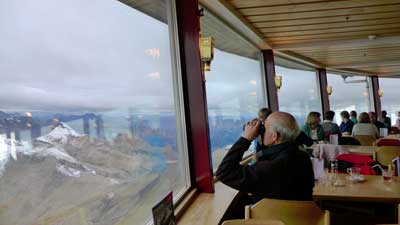
The problem is that the museums are only free on valid travel days, and almost no one would visit more than one or two museums with a Swiss Travel Pass. The trains and cable cars are so expensive that the pass gives very good value to cover those, so you don’t want to waste precious sightseeing time walking through a museum that only costs CHF10 anyway.
In other words, calculate the value of a Swiss Travel Pass on the travel savings only, and if you visit a museum here or there, then great. Most people are better off trying to squeeze in an additional train ride each day, and ignoring the museums. Switzerland is all about the outdoor scenery. As nice as the museums may be, they are not why you are there.
The pass includes free public transport in most Swiss cities
Similar to the free museum part of the offer, it’s best to ignore or minimize the value of free public transportation. It could be helpful in Zurich, but in most other Swiss tourist towns you won’t need much public transport. In fact, in Interlaken, each hotel or hostel guest automatically gets a card for free public transportation within the town (including between the two train stations).
So you might use a ride or two each day on public transport, but that won’t add up to much in terms of value of your Swiss Travel Pass.

Hello Roger, Wahlstrom a wonderful blog!
We are a family of 4 traveling to Switzerland. 2 adults and 2 children, 14 and 12.
Day 1 Zurich (staying in Winterthur)
Day 2 Lucerne
Day 3 Liechtenstein and on to St. Anton
Day 4 -5 To Gottmadingen to stay with friends
Do you think a Swiss Half Price pass with the Swiss family pass is worth it for the travel in Switzerland? If not, we were thinking of renting a car. We are planning on either Mt. Titlis or Pilates. Leaning toward Titis? Other day trips would be to Konstanz, Rhine Falls, etc
Laura,
A car might be a good way to go since you are visiting mostly spread-out places where parking shouldn’t be too expensive. On the other hand, with the Half Fare Card and a free Swiss Family Card, the kids will ride free on trains with the parents, and the parents will pay half price. The Half Fare Card also obviously comes in handy for all the attractions, so my guess is that it will be the best choice. By the way, Liechtenstein isn’t very interesting or special unless you really want to be able to say that you’ve been there. I’d go to Interlaken instead, which is full of most of Switzerland’s most dramatic sights. -Roger
Hello Roger,
Your website is really detail-oriented. I’m still in the midst of the reading them all. Can you comment on the draft itinerary we just wrote down:
Day 01 – Aug 9 2018 Thursday
Arrival in Milan
Depart to Interlaken by Bus afternoon
Check in around Interlaken West (stay overnight)
Day 02 – Aug 10 2018 Friday
Lauterbrunnen (train20 mins)
Gimmelwald (bus and cable car, few minutes) – check in at Mountain Hostel Gimmelwald
Day 03 – Aug 11 2018 Saturday
Murren (across Gimmelwald cable car, 5 mins arrival)
*Schilthorn observation deck and restaurant*
Day 04 – Aug 12 2018 Sunday
Check out and go to Interlaken to explore: Hohewag (13 mins), Harder Alpine Wildlife Park (20 mins walk)
-travel to Basel to Amsterdan
What pass do we buy? Or do we even need to?
Any other comment or suggestion is highly appreciated!
Warmest regards,
Kristelli
Kristelli,
Your plan looks quite good and you’ll love Gimmelwald and the Mountain Hostel. One thing to keep in mind though is that the weather at the top of Schilthorn can be foggy or cloudy at almost any time, so it’s best to head up there only when you know it’ll be pretty clear. There is no point in going if it’s foggy up top, so it’s best to be a bit flexible with your schedule if you can. I think the Half Fare Card will more than pay for itself, especially with Schilthorn, so I think that’s your best bet. Let me know if you have any other questions. -Roger
Hi Mr. Roger Wade,
I am visiting Switzerland from india along with my two daughters (29 and 25 years old). We will be reaching
– Zurich on the 28th of June till 1st July
– 2nd July Zurich to Chur. Taking the glacier express from Chur to Zermatt
– 2nd, 3rd, 4th, 5th staying in Zermatt and visiting Montreux and chocolate factory in Broc, Geneva, Matterhorn and leaving on the 6th
– 6th we are reaching and staying in Grindelwald (OR Interlaken) and visiting Interlaken
Skilthorn and Jungfrau
– 9th in Lucern
– 10th in Zurich
– 11th we are leaving Zurich and going To Santorini
I have mentioned my itinerary above to find out if we’re missing out any important places or if there’s anything you could suggest.
I have one more question.
If we want to visit chocolate factory should we go from zermatt to Montreux then Broc and again back to Zermatt
OR
We leave Zermatt and go to Montreux then Broc and go ahead to Grindelwald or interlaken?
We appreciate an early reply as we need to book our STP FOR 8+ 4 days for 2 people and one youth pass and do a reservation for Glacier express.
Thank You,
Sachi
Falguni,
First off I’ll ask you to have at least a quick look at my main article on where to go in Switzerland. In it you’ll find my general opinions on the best places to spend time in the country. The short version is that I wouldn’t spend much time in Zurich at all, unless you have specific things you want to see there. And Zermatt is a pleasant small town at the foot of the Matterhorn, but I wouldn’t normally recommend spending 4 nights there. The most dramatic views are in the Interlaken area and the most interesting sightseeing options aside from there are in the Lucerne area. It looks like you are planning only quick visits to both of those places while spending a long time in Zurich and Zermatt.
On the other hand, Switzerland is a really beautiful country and you could pick 3 or 4 random towns on a map and if you visited them you would be blown away by how beautiful they were. So if you do your exact plan I’m sure you’ll be really happy with it in the end. Zurich is a clean and pleasant city and even though it’s extremely expensive, it’s pretty nice. It’s just that Switzerland is all about the wide variety of amazing views, specifically of the Alps, and you don’t have much of that in your plan.
I haven’t been to one of those chocolate factories so I don’t have good advice on that, although I’ve heard they are really nice once you reach them. Again, I’m sure you’ll have a wonderful time if you do your plan, but if you aren’t locked in yet you might look into a couple of those other options. -Roger
Hello Roger,
I am planning to go to Switzerland on 29 June – 01 July 2018.
I have an acquaintance in there that tells me that i can buy a “2-Tages-Karte 2. Klasse” from a Post Office, that cost me CHF 94 each, but can be used at all normal public transport in all of Switzerland.
What I want to ask you, is this card is the same as Saver Day Pass?
Also, is this card valid for all of the panoramic scene Train and Popular Swiss scenic and theme trains, and Popular general train line routes for tourists to Switzerland.
Also, as far as I know, this pass does not cover the expenses for the cable car In Klein Titlis.
I wish to go to the very top of the Klein Titlis, and after browsing, the price for the return ticket is 94 CHF, but can be discounted to half if i have a Swiss Travel Pass.
Does my pass counts as Swiss Travel pass?
Thank you very much in advance for replying my questions. 🙂
Geoffrey,
Yes, it looks like basically the same as the Saver Day Pass, but this one is only for people who already have a Half Fare Card. The Swiss Rail system is insanely confusing. Pretty much all residents get a yearly Half Fare Card, so this is a version meant for them, though it does seem to be the same as the Saver Day Pass. All of the passes are good on the same things, which include the normal trains but not all of the mountain trains. And for the panoramic carriages in scenic trains you have to pay a supplement for a seat reservation.
So yes, this would be the same as having a Swiss Travel Pass as long as it is valid on the day in question. Have a great trip. -Roger
Hello Roger
Thanks for quick response. My cousin leaves in Basel, therefore we will be travelling back and forth each day.
Will consider as above. For half card use, each time we travel, need to pay the remaining half charge at train station? (Kids are free with Half card right?). Regards
Amit,
Interesting, my brother lives just over the border from Basel in Germany. Kids are free with the Swiss Family Card with one paying adult per kid and the Half Fare Card, so that will work. You can buy those half price tickets online and indicate that you have (or will have) a Half Fare Card. Or you can buy them at the station when you get there. They are more expensive if you buy on board from the ticket person. -Roger
Hello
Thanks for a wonderful summary of information.
I am travelling with my wife and two kids (under <14).
I am in Swiss with staggered days (3 days in beginning and 3 days later). The gap between the first and second is about 2 weeks.
We will be travelling for total 4 days in swiss (non consecutive as explained above).
1) Basel to Titlis and Lucerne and back to basel
2) Basel to interlaken and back
3) Basel to Jungfouch and back
4) Basel to Zermatt or anyother location and back.
Any recommendation please for the pass to use.
Is Half card valuable for me. Does it cover the mountain lifts and special trains at 50% discount with the half card pass?
Kindly advise.
Thanks
Amit,
I’d say the Half Fare Card is going to be your best option. It’s actually good for 30 days so it will cover both parts of your stay. On the other hand, it will be time consuming and expensive to go back and forth to and from Basel every day. If you can stay somewhere else closer to where you’ll be visiting it would be far better, but it sounds like you have a free room or at least a locked in reservation in Basel. In that case I’d recommend the Swiss Travel Pass Flex for 4 days in 1 month since it will cover all of your train trips. The Flex version of the Swiss Rail Pass can be used on non-consecutive days and it’s only a bit more expensive than the normal one. You can also get a Swiss Family Card so the kids can ride for free with the two paid adults. It’s free and you can get it from the same place you buy your main passes. -Roger
Hello Roger, I am struggling to determine which pass will be best for my wife and I, and was hoping you could provide a recommendation. Here is our itinerary:
Day 1: Flying from Reykjavik to Zurich, then taking train to Luzern
Day 2: “Golden Round Trip” to Mt. Pilatus. Most likely taking the boat and cogwheel railway up, then the aerial cableway and bus back to Luzern.
Day 3: City tour of Luzern
Day 4: Trains to Murren
Day 5: Schilthorn or Jungfrauhoch (haven’t decided yet)
Day 6: Via Ferrata from Murren to Gimmelwald, or Paragliding
Day 7: Train to Bern
Day 8: City tour of Bern
Day 9: Train to Zurich
Day 10: Fly home from Zurich
Fred,
Based on the list as you have it I would say the Half Fare Card is probably your best value. Generally speaking, the more things you do the better value you could get out of the Swiss Travel Pass. It looks like you could do well with an 8-day Pass from days 2 through 9 of your itinerary, and with the longer passes like that it’s easier to get even better value because the daily price is pretty low. In fact, I’d say the 8-day pass is almost certainly your best value and it will allow you to see and do more than just the Half Fare Card. Since Schilthorn is now fully included in the Swiss Travel Pass, while Jungfraujoch is only 25% off with the pass, it will be even better value if you choose Schilthorn. Both are amazing. Let me know if you have any other questions. -Roger
Hi Roger, your site is amazing & very informative. I was confused between choosing the STP/BOP. Even the pass is on the cards.
Aug 19, landing Zurich Airport – Lucrene : Mt Pilatus/ Lucrene Lake e
Aug 20 – Interkalen or Wengen
Aug 21 – Interkalen or Wengen
Aug 21 – Interkalen or Wengen – off to Italy !
Aug 22 – Interkalen or Wengen
During my stay I would be visiting most towns in Bernese region like Murren, lauternbern, grindelwald etc.
I wouldnt be keen on any scenic train trips, but more focused on outdoor activities & visiting spots.
Can you please help me out
Anthony,
If you aren’t thinking about any of the longer train trips I think your best options would be the Half Fare Card or the Bernese Oberlander Pass. I know it’s confusing, but it really depends on which things you end up doing. The Half Fare Card seems to be the best choice for most people, but if you are staying in Wengen it would mean quite a few train trips around the area and the Pass might save you even more. I wish I could help more. It’s really just a matter of figuring out what you’ll do and adding up the costs with each method. Have a great trip. -Roger
Roger, thank you very much for your input. one last thing: Is Gruyeres worth seeing? We have it on the list but we can always skip it to spend more time someplace else if not worth it.
Geraldina,
I haven’t actually been to Gruyeres, but I have read and heard good things. It’s definitely a beautiful city with a great location, but Switzerland has no shortage of those so I wouldn’t worry about missing it if you are short on time. One great thing about Switzerland is that you can go almost anywhere and it will feel like you are in a postcard. Have a great trip. -Roger
Roger, Thank you for your prompt response and advise. Appreciate it!